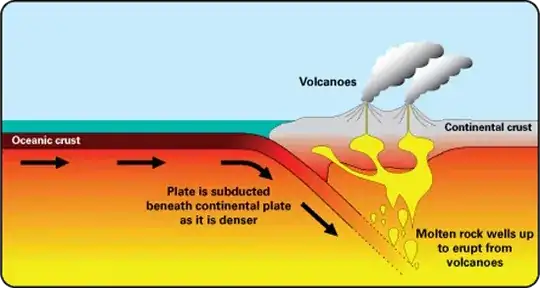If I remember right, the global temperature would only have to drop by 3 degrees Celsius in order to throw the world into a new ice age. In 1991, Mt Pinatubo in the Philippines erupted and lowered global temperatures by 0.5 degrees Celsius for a couple years. So in theory, if 6 volcanos of the same magnitude–a Volcanic Explosivity Index (VEI) of 6–were to erupt in the same year, it would likely plunge the world into a mini ice age, which would be devastating for many species.
A VEI-7 Volcano is ten times more destructive than a VEI-6. In 1815 Mount Tambora in Indonesia erupted, which resulted in the year without summer, during which 90,000 people froze to death.
A VEI-8 is an apocalyptic sized volcano, it would eject ten times as much material into the atmosphere (> 1,000 km³) which would effectively blot out the sun. The last VEI-8 volcano to erupt was during the Late Pleistocene era, and ushered in the Pleistocene or "Ice Age" extinction event that saw the extinction of many mammals that were larger than 40kg.
As far as I know there has never been a VEI-9 volcano, such a volcano would release more than 10,000 cubic kilometres of material into the atmosphere, it is doubtful that anything would survive such a catastrophic event.
So the answer to your question would likely be a volcano as destructive, or more destructive than a VEI-8.
To answer your question of where such a volcano would have to be - The obvious answer is where there is volcanic activity, which occurs over subduction zones (The ring of fire), and likely where there would be sufficient mass to blast into the atmosphere.

The largest volcanos we know about were all in the Andes, some were extremely powerful VEI-8's, close to VEI-9, like Tamarana which ejected an estimated volume of 8,600km$^{3}$ of material. It's Tamarana which is theorized to be a part of a series of eruptions that wiped out the last of the dinosaurs. If you wanted to pick a mountain to be your VEI-9 volcano, I'd pick Nevado Ojos del Salado It's currently the highest Stratovolcano we know about at 6,893 m (22,615 ft) this means there is a lot of earth under it, and gives it the best potential to eject 10,000km$^{3}$ of material high into the atmosphere.
